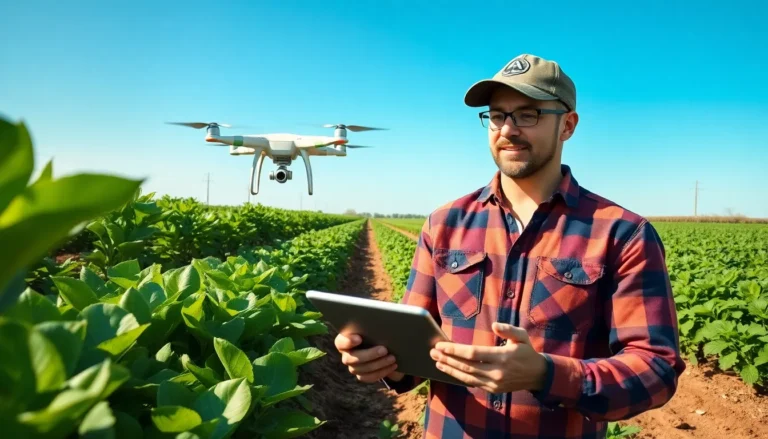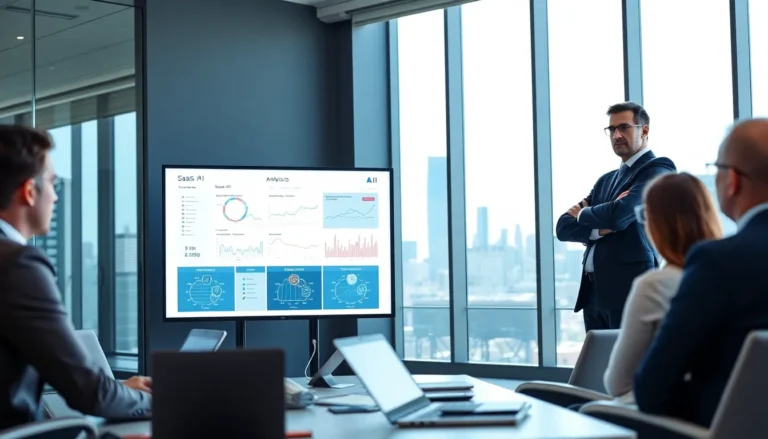Table of Contents
ToggleIn a world where surprises can be thrilling—like a surprise birthday party or finding a $20 bill in an old coat—there are also surprises that can send shivers down anyone’s spine. Enter early warning systems, the unsung heroes of disaster preparedness. These high-tech guardians keep watch over everything from tsunamis to tornadoes, giving people the heads-up they need to stay safe and sound.
Imagine having a personal alarm system that shouts, “Hey, get to higher ground!” or “Tornado alert—grab your shoes and run!” With the right early warning system in place, communities can dodge disaster like a pro dodgeball player. So, let’s dive into the world of early warning systems and see how they transform chaos into calm, one alert at a time.
Overview of Early Warning Systems
Early warning systems play a vital role in disaster preparedness. These systems provide alerts about imminent hazards, such as tsunamis, tornadoes, floods, and earthquakes. Communities equipped with such systems often respond more effectively to emergencies, reducing the risk of injury and loss of life.
Alerts generated by these systems can include messages sent via text, social media, or broadcast channels. Devices like sirens or mobile apps help disseminate information rapidly. For instance, the National Oceanic and Atmospheric Administration (NOAA) employs advanced radar technology to forecast severe weather events, giving users crucial minutes to prepare.
Timeliness is essential; systems must detect threats early and relay information quickly. They rely on comprehensive data collection from various sources, such as meteorological stations and satellite imagery. This rich data input enables accurate predictions, empowering authorities to take necessary actions.
Integration with community resources enhances efficacy. Local governments collaborate with emergency services to ensure messages reach all population sectors. When these systems function well, they help minimize panic and chaos during disasters.
Global perspectives reveal variations in technology and implementation. Countries adopt different equipment and methodologies suited to their specific risks and infrastructure. Some regions utilize sophisticated modeling software, while others depend on simpler alert systems to inform citizens.
Regular training and public education ensure that communities know how to respond when alerts occur. Understanding the system’s alerts strengthens overall response strategies, maximizing the chances of safety for residents.
Importance of Early Warning Systems
Early warning systems serve as essential tools for enhancing safety during disasters. These systems help communities prepare for and respond to impending threats such as tsunamis, tornadoes, floods, and earthquakes.
Risk Mitigation
Early warning systems significantly reduce risk during emergencies. By promptly alerting individuals of potential dangers, these systems allow communities to take preventive measures. Decisions made before disaster strikes can save lives and reduce property damage. Accurate data collection and analysis contribute to reliable predictions, which supports efficient resource allocation. These capabilities foster resilience, ultimately lessening the impacts on vulnerable populations.
Emergency Preparedness
Emergency preparedness relies heavily on effective early warning systems. Information dissemination through various channels ensures that residents receive timely alerts. Local governments collaborate with emergency services to facilitate these communications, ensuring messages reach every sector of the community. Public training sessions and education improve understanding of the appropriate responses to alerts. Increased preparedness fosters a culture of safety, empowering individuals to act decisively during crises.
Types of Early Warning Systems
Early warning systems are diverse and tailored to address specific risks. They play a vital role in comprehensive disaster preparedness.
Natural Disaster Warning Systems
Natural disaster warning systems alert communities to imminent threats from events such as hurricanes, earthquakes, and floods. Governments utilize advanced technologies like seismic sensors and satellite imagery. These methods gather real-time data that enhances prediction accuracy. For instance, countries in high-risk zones often employ robust warning networks to transmit alerts via sirens, mobile apps, and text messages. Community education programs ensure residents know how to react effectively when these warnings are issued. Timely alerts provide crucial moments that can lead to life-saving actions during disasters.
Health Surveillance Systems
Health surveillance systems monitor public health threats, including pandemics and disease outbreaks. They collect and analyze data from healthcare facilities, labs, and community reports. Real-time information allows health officials to detect anomalies and respond quickly. For example, systems like the Global Health Observatory track illness trends worldwide. This data-driven approach empowers health authorities to disseminate alerts and guidelines that guide public behavior in crisis situations. Public awareness campaigns enhance the effectiveness of these systems, ensuring communities remain vigilant and prepared for health emergencies.
Security and Threat Detection Systems
Security and threat detection systems focus on identifying potential threats to public safety. These systems utilize technologies such as surveillance cameras, sensors, and AI algorithms for real-time monitoring. Agencies collaborate to share intelligence and coordinate responses, thereby enhancing community safety. For example, urban areas may implement integrated systems that alert law enforcement about suspicious activities. Such proactive measures bolster community awareness and preparedness. Regular drills and public education initiatives further strengthen the effectiveness of these systems, making it easier for individuals to recognize and respond to security alerts promptly.
Challenges in Implementing Early Warning Systems
Implementing early warning systems presents several challenges that can hinder their effectiveness.
Technological Barriers
Technological barriers often arise due to insufficient infrastructure. Many regions lack the resources to set up advanced systems for data collection and dissemination. Additionally, outdated technology can lead to unreliable predictions. Diverse communication technologies further complicate implementations, making it hard to ensure messages reach everyone. Compatibility issues between old and new systems can create gaps in alerts. Limited internet access exacerbates these problems, especially in rural or underserved areas. Strong investments in modernizing infrastructure are crucial for addressing these technological barriers effectively.
Community Awareness and Engagement
Community awareness plays a critical role in the success of early warning systems. Many individuals remain unaware of existing systems or how to respond to alerts. Educational initiatives help fill this gap, creating informed populations that can act swiftly. Engaging local leaders fosters trust and encourages participation in preparedness activities. Involving citizens in drills and simulations strengthens community readiness. Conversations around risk and response build a culture of safety. Comprehensive outreach ensures groups most at risk receive vital information, amplifying the systems’ impact.
Future Trends in Early Warning Systems
Advancements in technology shape the future of early warning systems. Integrating artificial intelligence enhances data analysis capabilities. Predictive analytics will play a crucial role in sifting through vast amounts of information, leading to quicker alerts. Drones and meteorological balloons provide real-time data collection in hard-to-reach areas, improving accuracy.
Collaboration between local governments and tech companies grows. This partnership ensures tailored solutions for specific community needs. Accessibility becomes a top priority, as developers create applications suited for various devices. User-friendly interfaces will make it easier for individuals to receive and understand warnings.
Educational initiatives advance as communities recognize their importance. Public training programs focus on familiarizing residents with alert systems and response actions. Social media campaigns will broaden reach, emphasizing the need for immediate attention during emergencies. These outreach efforts help mitigate confusion and foster a culture of preparedness.
Data sharing between nations increases. Global networks facilitate the exchange of information about natural disasters and health threats. This collaboration enhances early warning systems and strengthens international resilience against crises. Countries will adapt lessons learned from each other to bolster their own warning protocols.
Emphasis on community-specific challenges leads to targeted investments. Governments will allocate resources to improve infrastructure in underserved areas. These developments aim to address connectivity issues and ensure comprehensive coverage. Vulnerable populations benefit the most from these enhancements, as they often face the greatest risks during emergencies.
Research continues to drive innovations in this field. Experts explore ways to improve the reliability of alerts while minimizing false alarms. Striving for accuracy remains essential for maintaining public trust in early warning systems. As technology progresses, these systems are likely to evolve into even more indispensable tools for safeguarding lives.
Conclusion
Early warning systems are vital for enhancing community safety and resilience. By providing timely alerts about impending threats, these systems empower individuals to take necessary precautions. The integration of advanced technology and community resources ensures that alerts reach everyone, minimizing panic and chaos during emergencies.
As these systems continue to evolve, their effectiveness hinges on public education and engagement. Ongoing training and awareness initiatives will strengthen community responses and trust in these alerts. With advancements in technology and collaboration among local governments and tech companies, early warning systems will become even more essential in safeguarding lives and promoting preparedness in the face of disasters.







